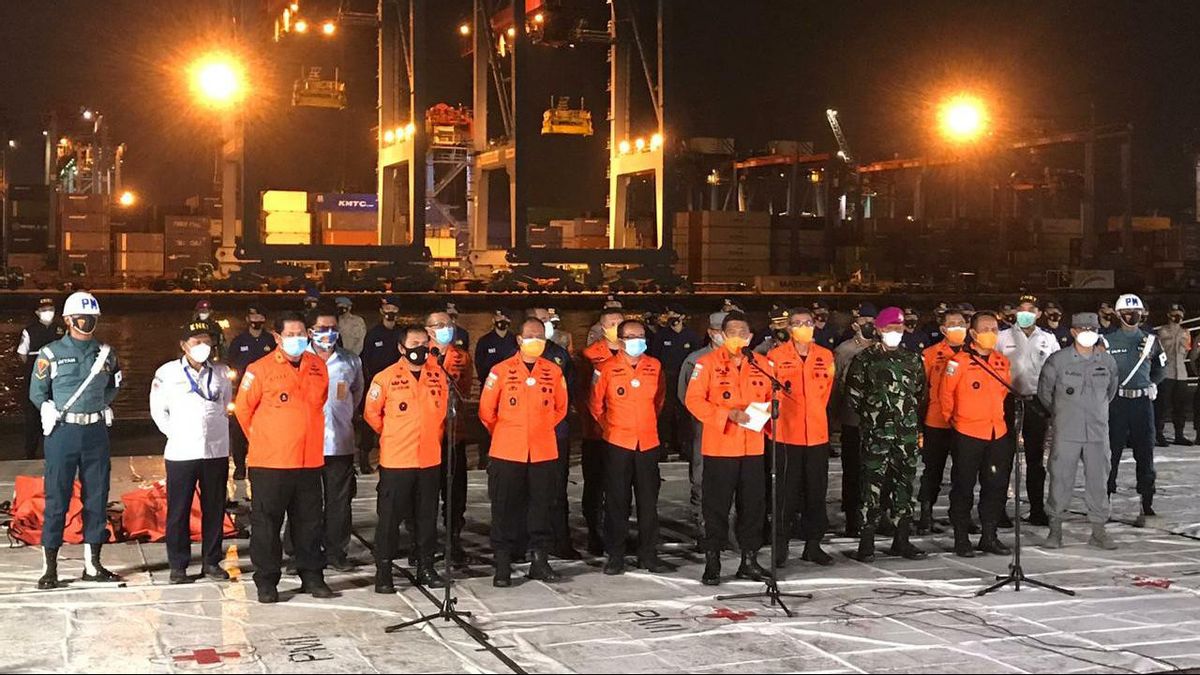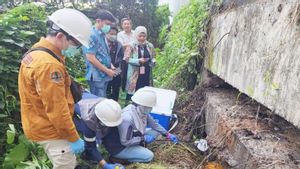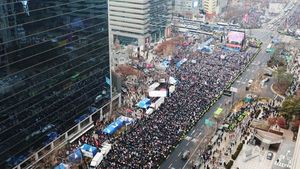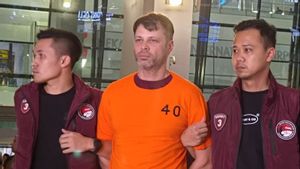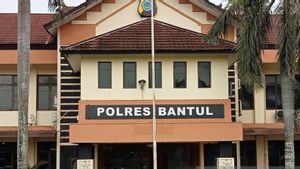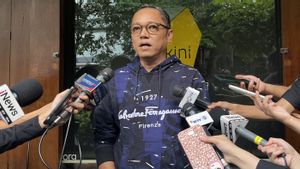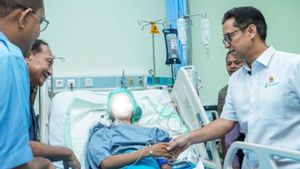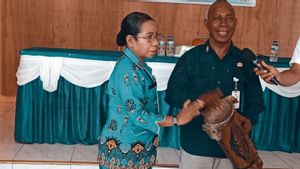JAKARTA - Head of Basarnas, Marshal Madya Bagus Puruhito, said that the search for the Sriwijaya Air SJ-182 cockpit voice recorder (CVR) is still being carried out. The search was constrained by the release of underwater acoustic beacons from the CVR, which actually served to facilitate detection.
"Regarding CVR, I will repeat again, I said earlier that it is still being carried out (the search). I added that I had communicated with the head of the NTSC and the Fleet Commander at the location, the information we got was that the casing was wrapped or the body protector from the CVR was found, "Kabasarnas said in a press conference at the main post for the search for Sriwijaya Air SJ-182 aircraft at JICT2. Tanjung Priok, Jakarta, Thursday, January 14.
"The problem that exists, as we all know, the beacon that can take us to the object has been removed from the tool, so we use a relatively longer method and the water under the surface is quite heavy," he added.
In today's joint SAR operation, the team collected 98 body bags containing body parts of the victims. Meanwhile, small aircraft debris increased by 9, and large aircraft debris increased by 5.
The total findings of the SAR team until the sixth day were 239 body bags containing body parts. Then, as many as 73 aircraft materials, with details of 40 small bags containing aircraft debris and 33 large pieces of aircraft.
Previously, the Sriwijaya Air black box fligt data recorder (FDR) was found on Tuesday, January 12. The black box FDR was immediately submitted to the National Transportation Safety Committee (KNKT).
Previously, Chairman of the IKKT Aviation Committee Sub-Committee Nurcahyo Utomo said that the process of downloading data from the FDD black box took about two hours.
"The data download process (black box FDR) will take two hours if it runs smoothly without problems," said Nurcahyo in his statement, Wednesday, January 13.
However, the NTSC has not yet downloaded the FDR data. This is because there are a series of processes that must be carried out, from dismantling the circuit to cleaning the black box.
The process begins with removing the crash survanable memory unit (CSMU) from the black box series and cleaning it from dirt due to being submerged in the sea.
CSMU is part of a black box that can withstand impact and resistance up to 250 g, and can withstand temperatures up to 1000 degrees for 1 hour.
"After removing the unit, the memory of the unit is then cleaned of dirt, mainly from salt because this unit was once submerged in the sea, cleaned using distilled water and then continued using alcohol," explained Nurcahyo.
After cleaning, it is followed by the drying process using a special oven for 8 hours. After drying, the recorded data in the new FDR can be downloaded.
"Downloading data is connecting to FDR which is still good for downloading data. This is the same as downloading data from a memory card or from a CD or using a player that is still good," he said.
The English, Chinese, Japanese, Arabic, and French versions are automatically generated by the AI. So there may still be inaccuracies in translating, please always see Indonesian as our main language. (system supported by DigitalSiber.id)
